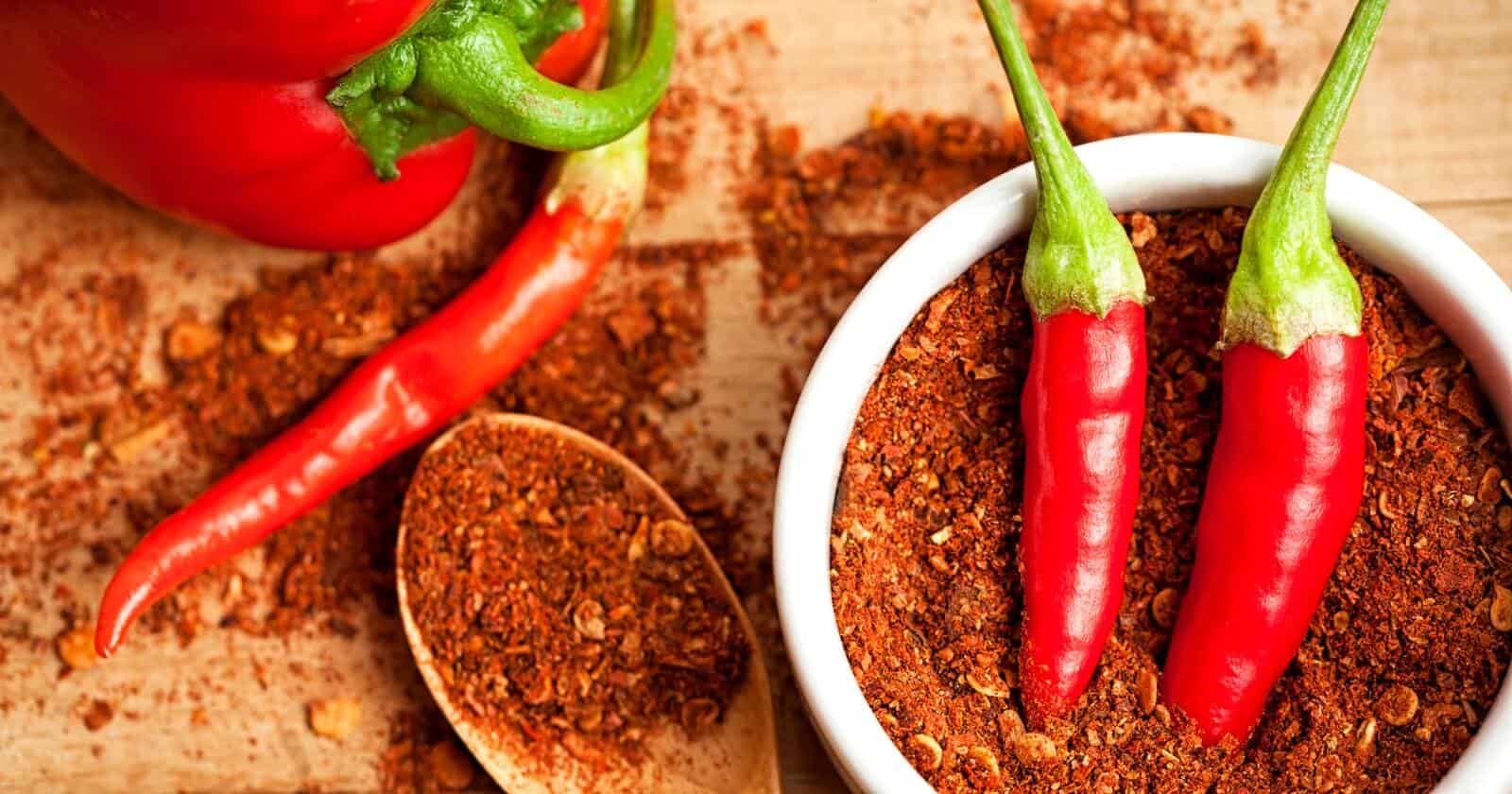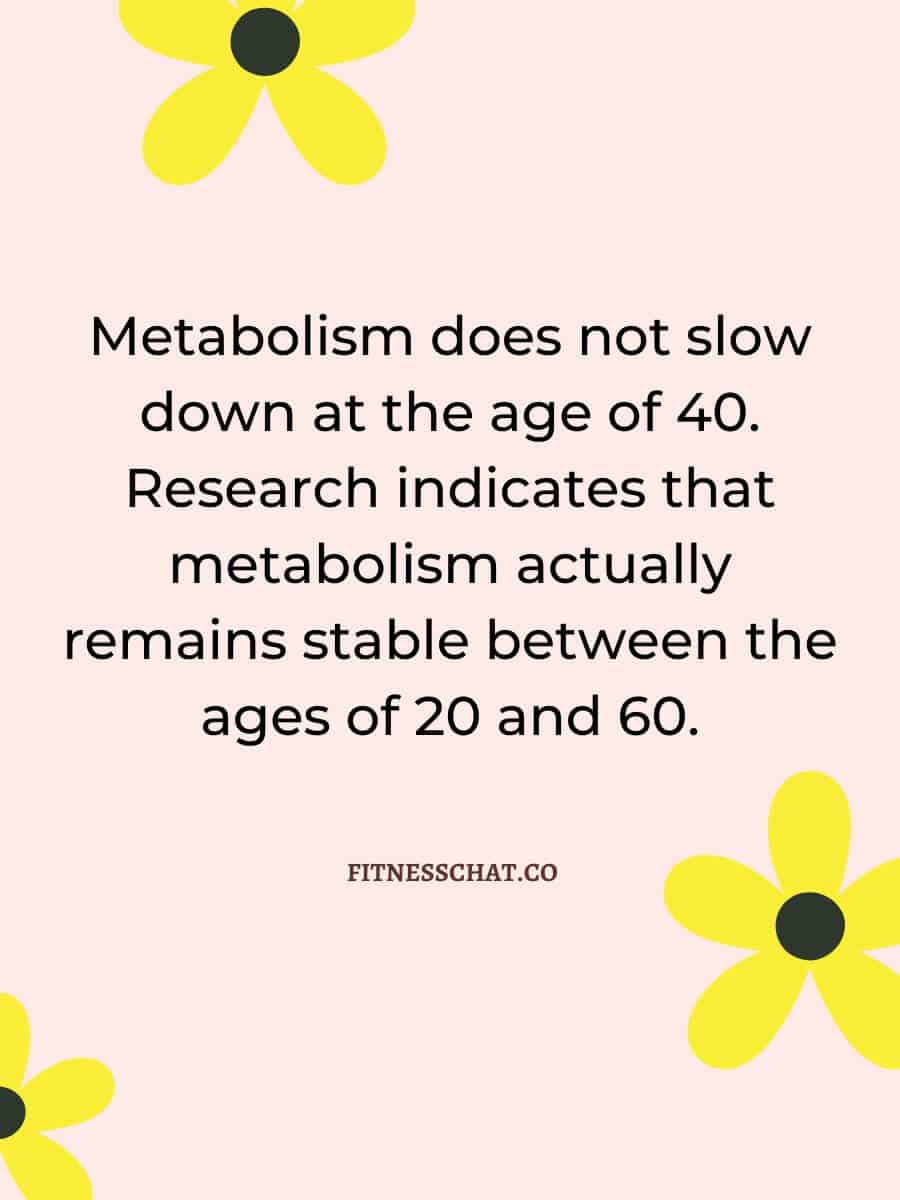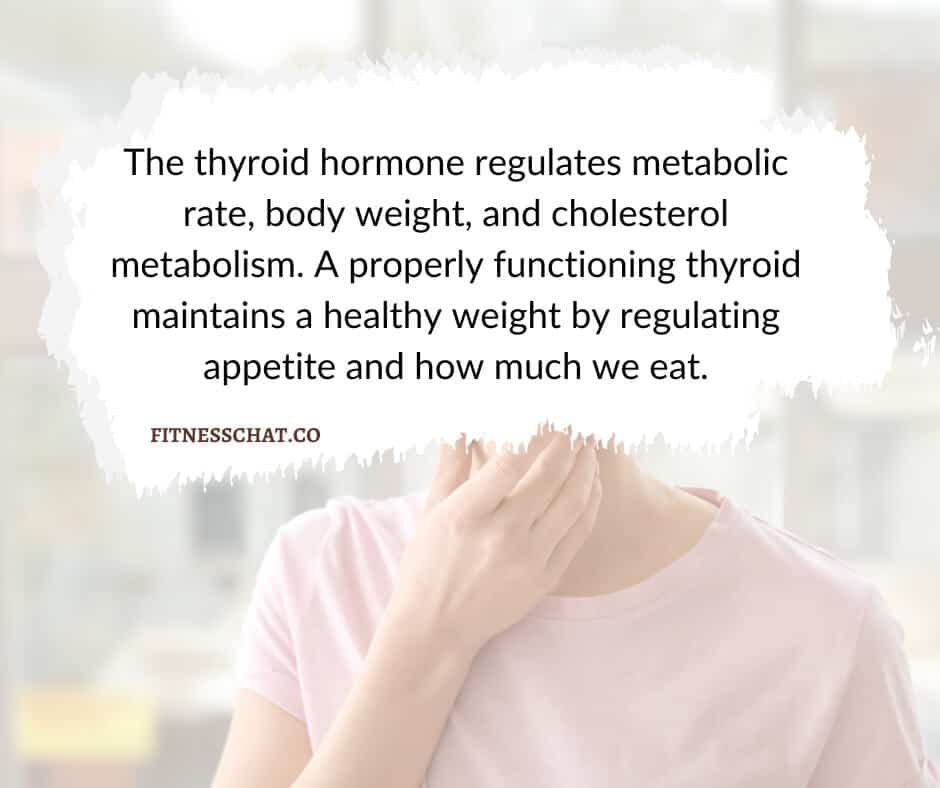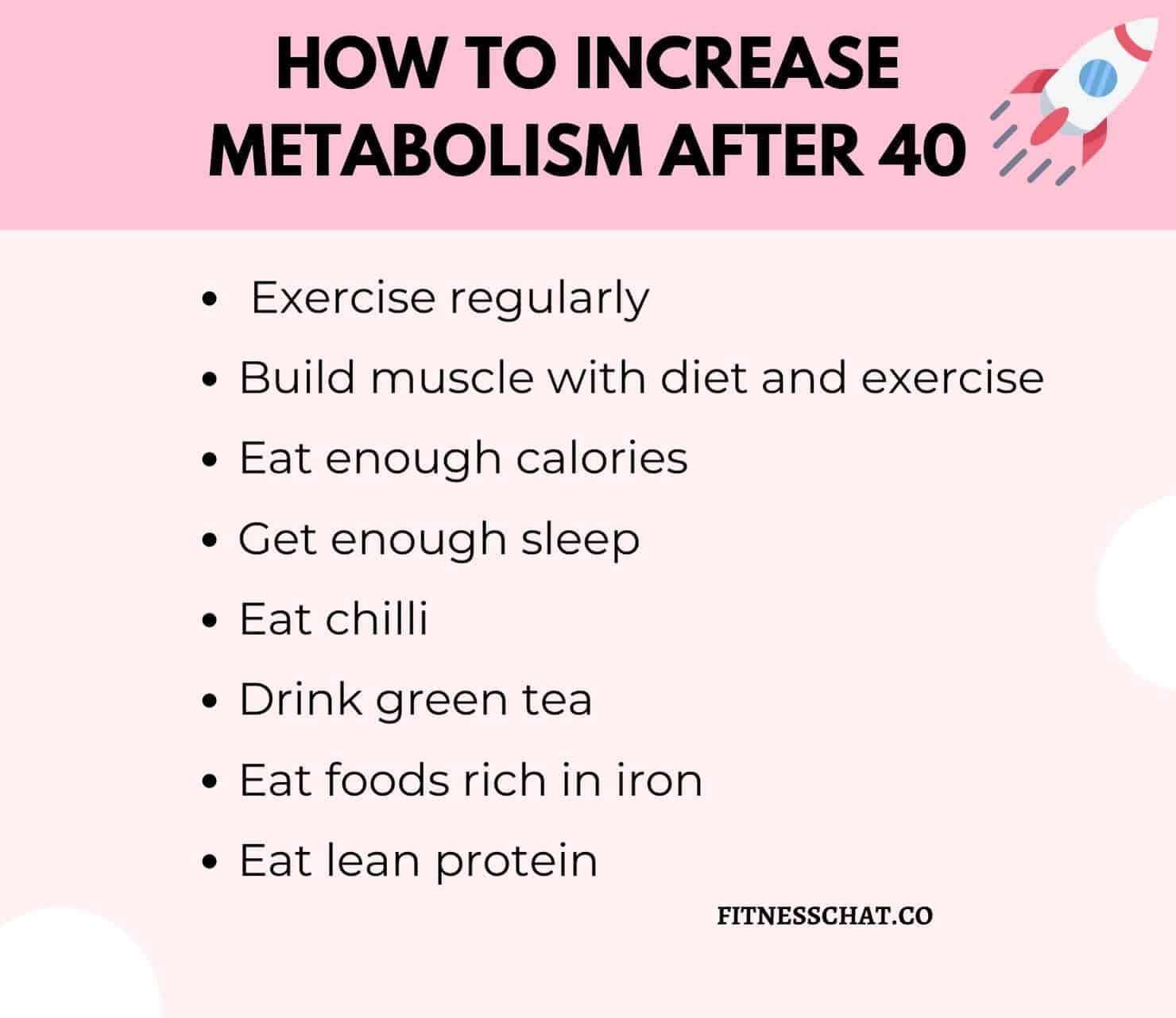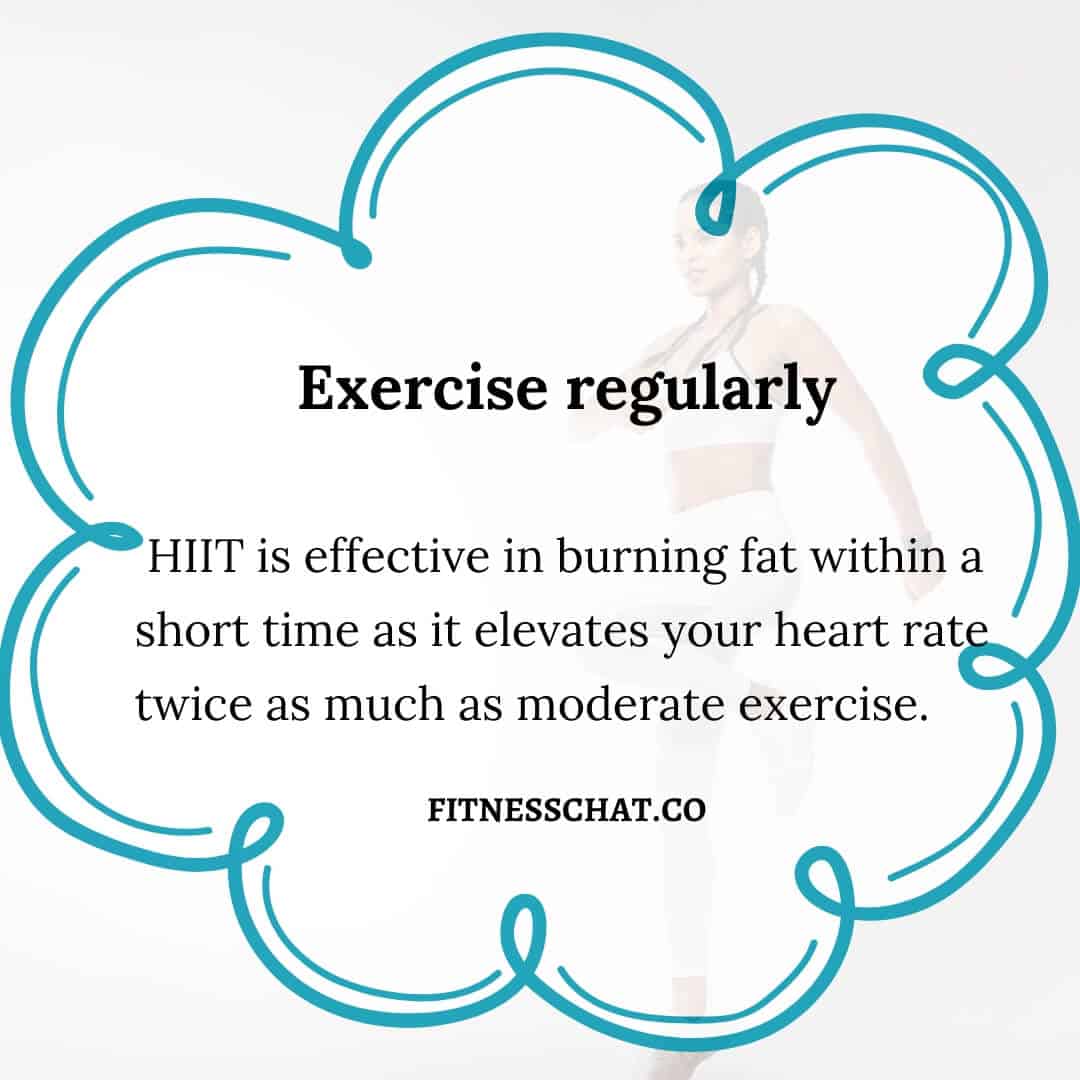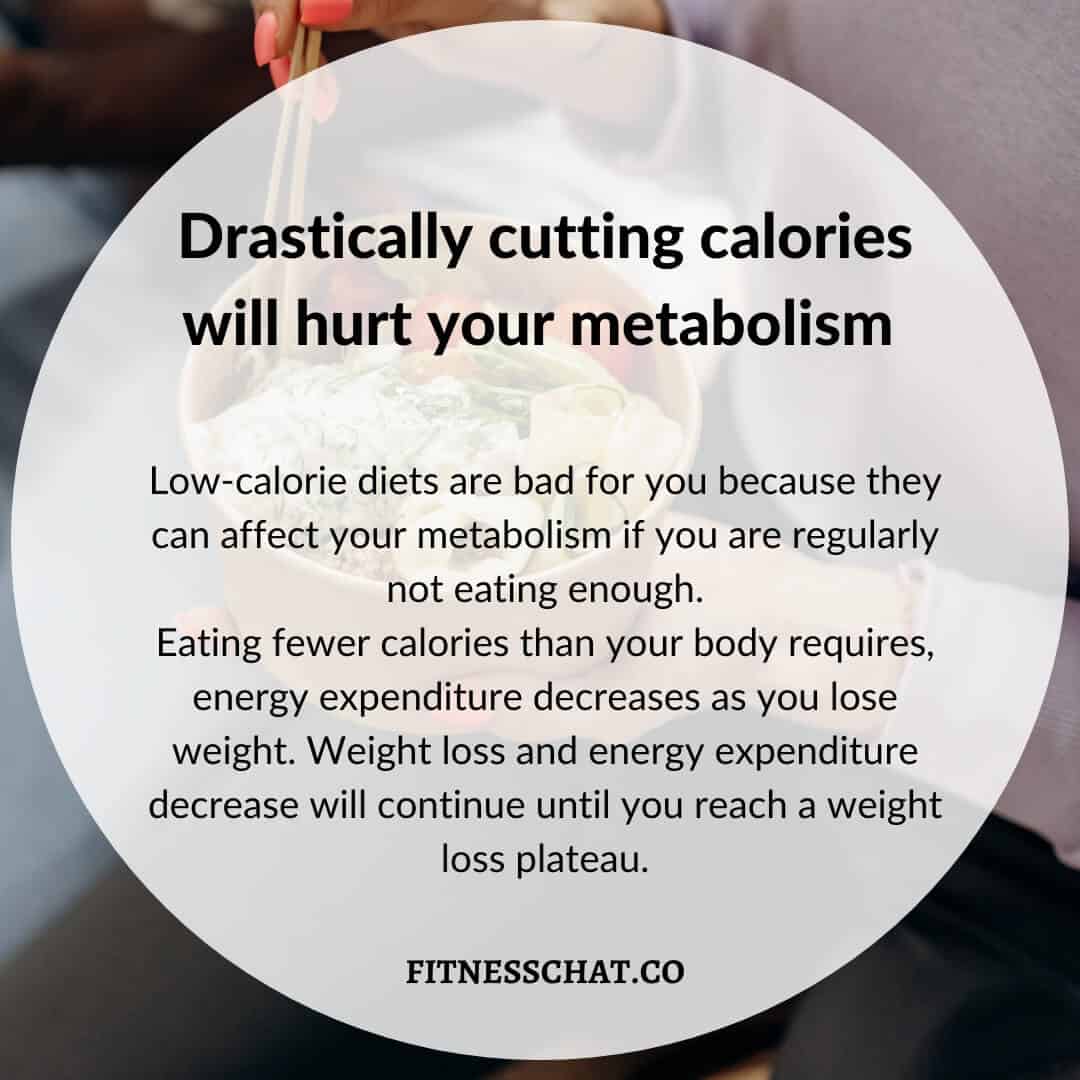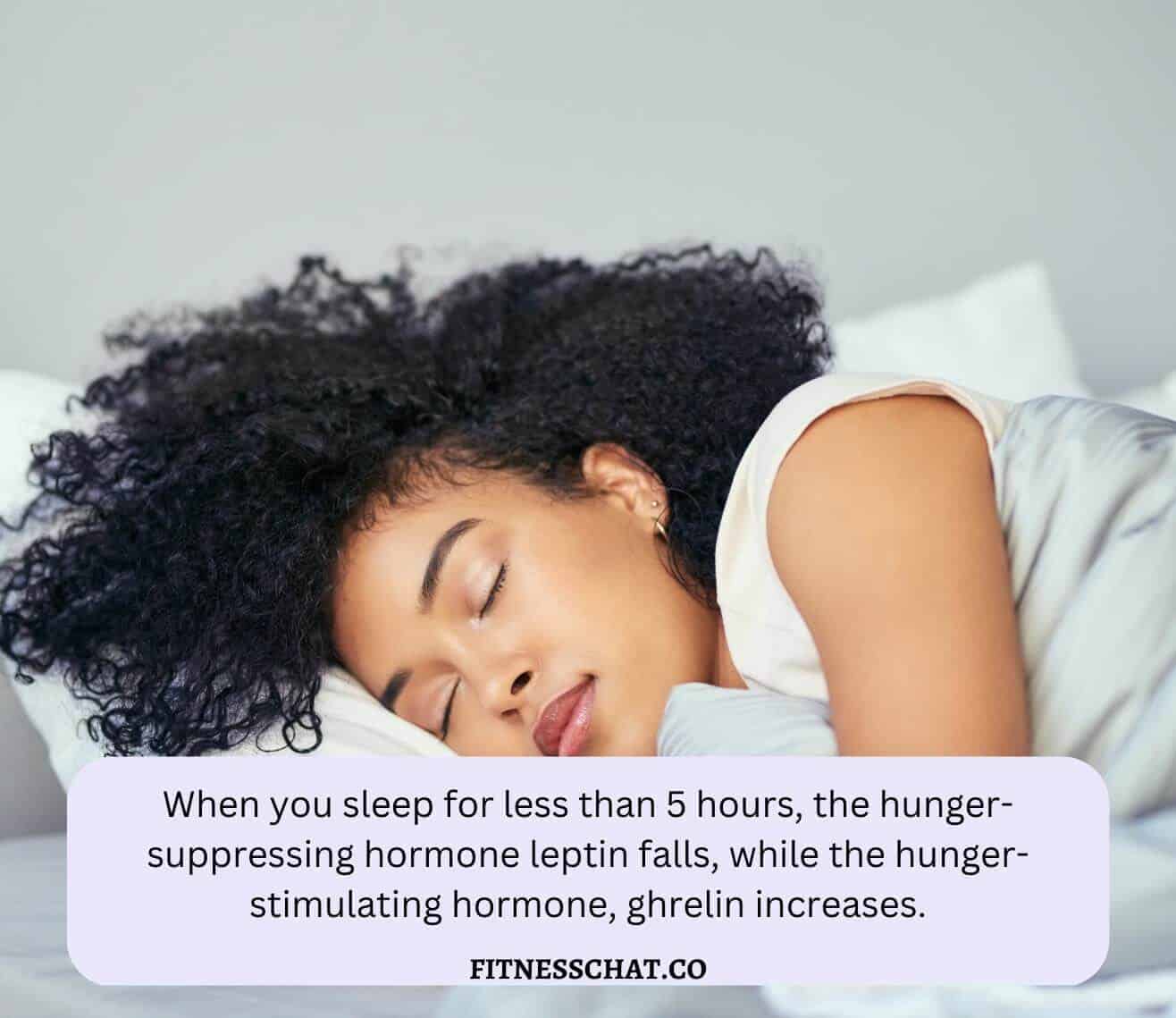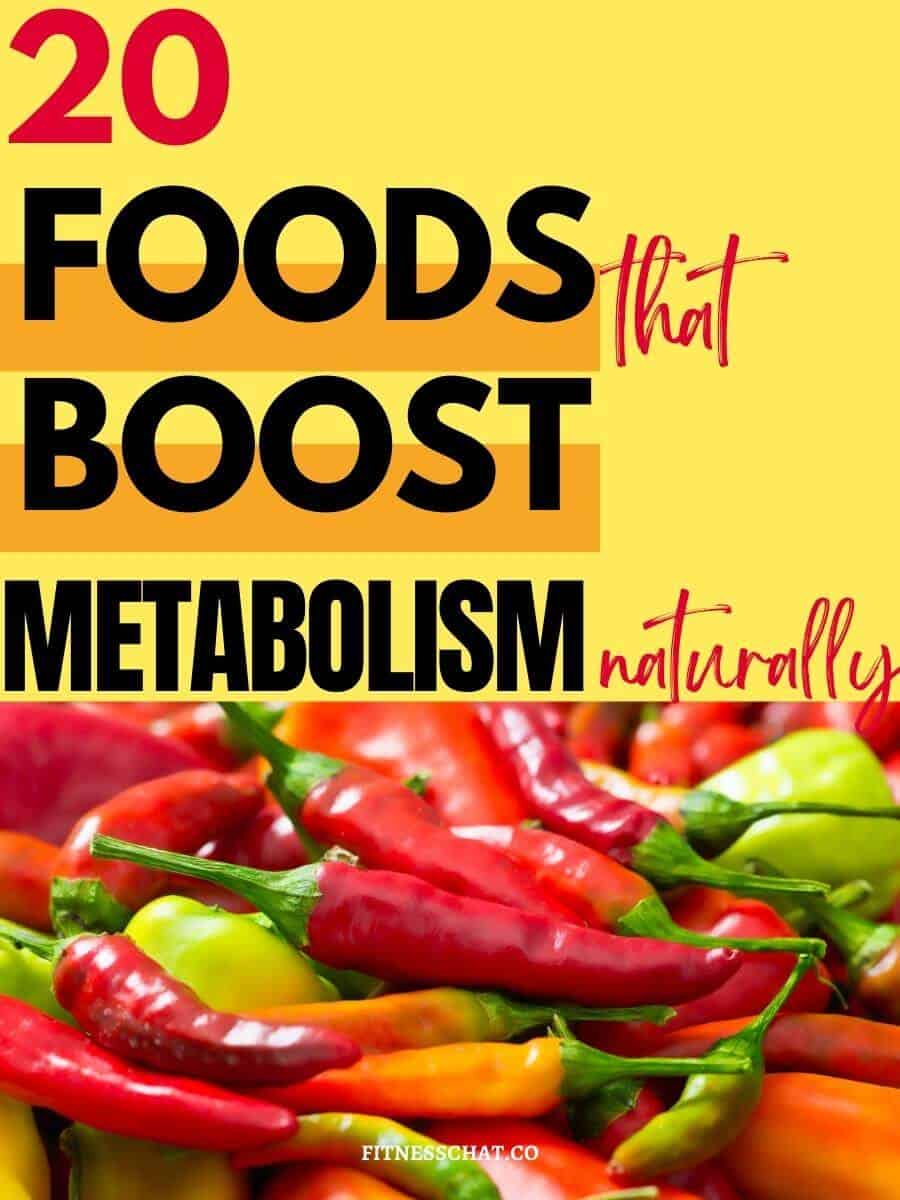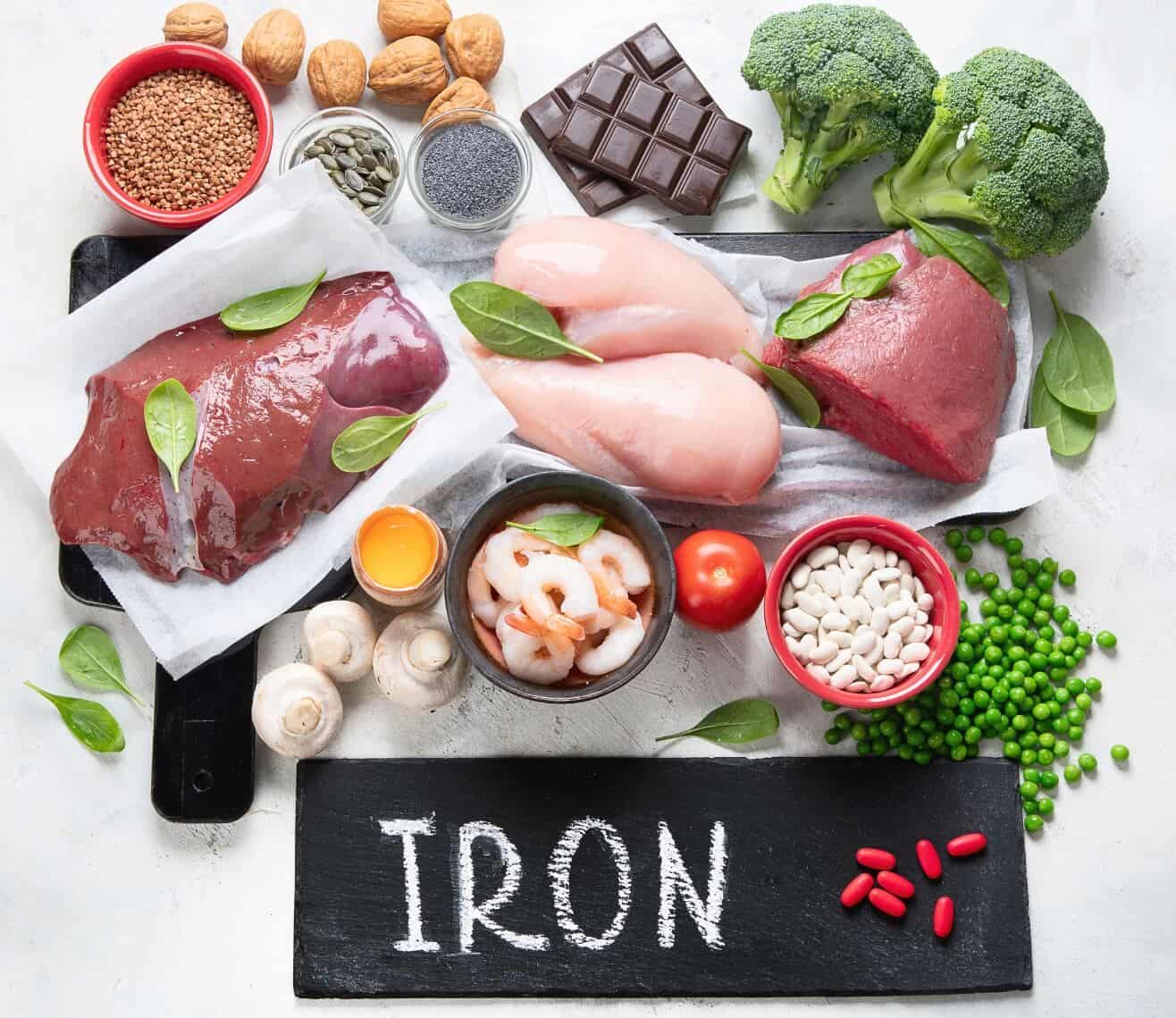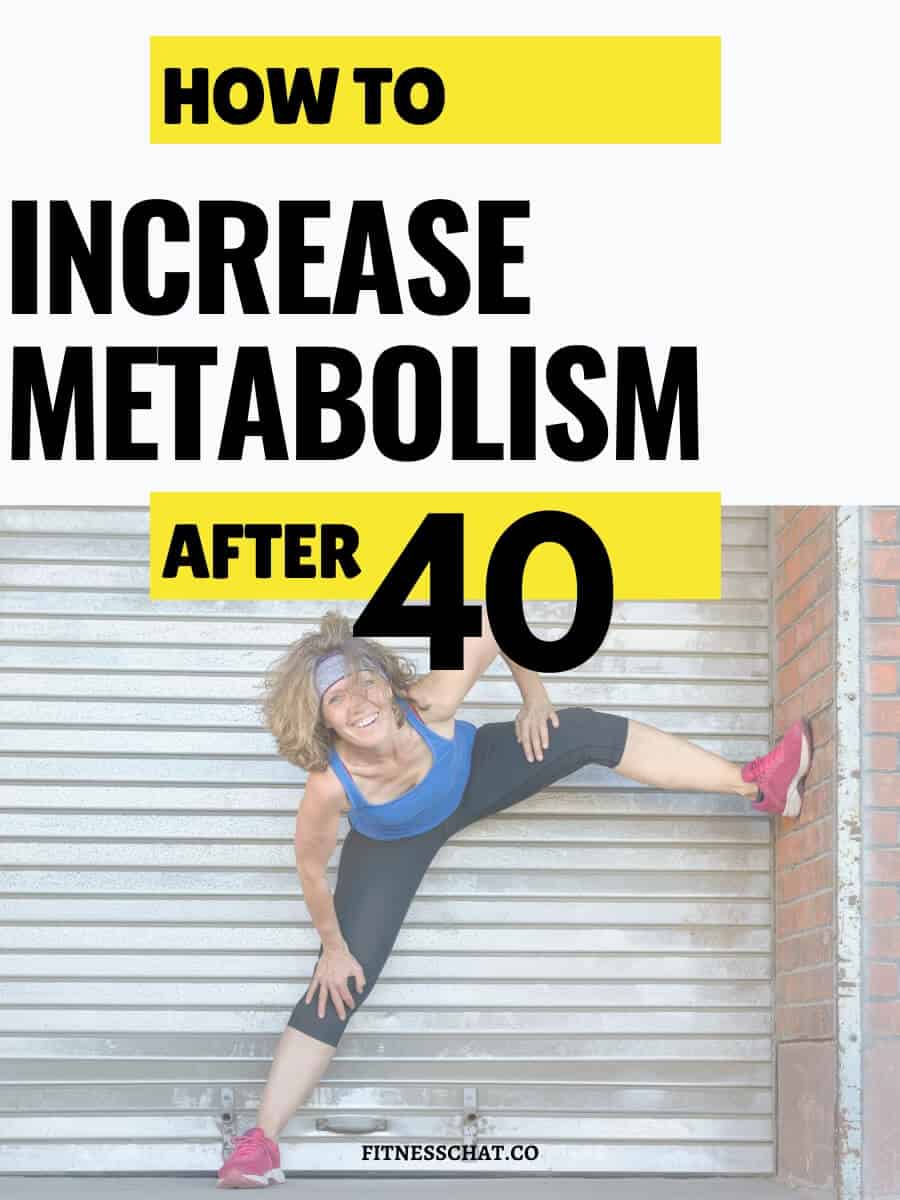There is something incredible about turning 40 as a woman – you know what you want, how to get it, and you go after it and get it. Well, most of the time, anyway.
The one thing that keeps eluding a woman like me who is over 40 is a fast metabolism. At this point in life, questions like how to increase metabolism after 40 or what type of food you should eat to boost metabolism, start popping up.
While it’s been repeatedly said that with age comes wisdom, nobody prepares you for the fact that getting older as a woman also brings about a slow metabolism and weight gain.
Like my young women, my metabolism was super-fast in my early 20s. I could eat like a horse and never gain extra pounds. Life was good in those days, I tell you.
Fast forward to today. I’m in my early 40s and at my peak professionally, emotionally, and mentally, but my waistline has been thickening like crazy. Keeping the weight off is becoming a constant battle.
I have been wondering if any of it has been due to my metabolism slowing down because I can’t even look in the general direction of a slice of chocolate cake because then the fat will jump out and sit on my hips, thighs, or tummy.*Cries on the inside like a winner*
Your metabolism does not slow down when you turn 40
So, on my journey of discovering how to increase metabolism after 40, I learned that metabolism does not slow down at the age of 40. Research indicates that metabolism actually remains stable between the ages of 20 and 60[1].
According to the study, which involved over 6000 people in almost 30 countries between the ages of 8 days and 95 years, metabolism is at its peak in babies aged between 9 and 15 months.
Between the ages of 1 and 20 years, the kids continue to grow and gain more muscle and less fat.
As kids and teens grow, their bodies become more efficient at using energy. At this point, they don’t need as much energy to maintain their size as they did when they were younger. Around this age, metabolism starts to slow down until it reaches a plateau.
Between the ages of 20 and 60, our metabolism stabilizes, meaning that the body can maintain its size and basic functions without needing more or less energy.
According to findings published in Harvard Health, it’s only around the age of 63 that the body becomes less efficient, and metabolism starts to decline!
As you can see, this throws everything we know about turning 40 and metabolism out of the window.
So then if metabolism does not slow down when we hit 40, why is the waistline getting bigger, and why you are struggling to lose weight after 40?
Come along with me as I explore natural ways to increase metabolism after 40 and some of the foods that increase metabolism and burn fat.
Must read:
- How I Lost Weight (7 Weight Loss Tips That Work)
- 32 Foods That Burn Belly Fat Fast
- 10 surprisingly low calorie snacks for weight loss that are filling
- How to lose weight when you can’t exercise
- 5 fruits to avoid for weight loss {backed by science}
First things first, what is metabolism?
Metabolism is a process by which our bodies convert food and drink into energy, which we use to keep our organs functioning, move our muscles, and perform all our daily activities. [2].
According to the Mayo Clinic, the body requires energy to carry out various functions such as breathing, maintaining hormonal balance, and blood circulation.
This rate at which the body expends energy is called basal metabolic rate (BMR) and represents the number of calories the body needs to perform these functions while at rest.
BMR is influenced by a variety of factors including lifestyle, age, muscle mass, and gender.
What causes the metabolism to slow down?
The speed at which our metabolism operates can vary, and many factors such as genetics, age, hormones, caloric restriction, and lifestyle can cause metabolism to slow down. Let’s go over these factors one by one.
While we have established that turning 40 does not a slow metabolism make, we should also be aware that as we grow older, we experience natural body changes, including slower walking speeds and progressive loss of physical strength. These changes that come with aging can affect our daily energy expenditure.
Genetics
Genes play a role in determining how fast or slow one’s metabolism is. You probably have met people who have an insanely high metabolism. I have two such close friends – one is in her early 40s, while the other is in her late 40s.
My two friends were born with fast metabolisms and have pretty much been the same size since high school. They eat whatever they want and never gain weight because of their genes.
There’s not much you can do to change your genetics but making healthy lifestyle changes can help you optimize your metabolism.
Muscle Mass
People with more muscle mass burn more calories even at rest. This is according to an article published by the University of New Mexico which revealed that muscle contributes 20% to the Total Daily Energy Expenditure (TDEE- which is the energy that a person uses a day) while fat contributes about 5% [3].
The more muscle you have, the more energy you will burn. Adding strength training to your workout routine will help you build muscle.
Activity Level
The more active you are, the more calories you burn. When you are not moving around for longer periods, your metabolism will slow down because your body will not need as much energy to sustain itself.
However, this does not mean that you have to spend hours on the treadmill. Simple activities such as household chores or walking your dog can help increase your metabolism after 40.
Thyroid Hormone
The thyroid hormone regulates metabolic rate, body weight, and cholesterol metabolism. A properly functioning thyroid maintains a healthy weight by regulating appetite and how much we eat [4].
When your thyroid does not produce enough hormone, the body’s basal metabolic rate will slow down.
Gender
Men generally burn more calories than women because they have a higher percentage of muscle mass. This is why it is important for women to include weightlifting in their exercise plans.
Related: why women should lift weights
How to increase metabolism after 40
Since you can’t do anything about your age, genetics, or gender (if you can, that’s awesome), there are a few changes you can make to help you boost your metabolism. Let’s go over them:
1. Exercise regularly
Regular exercise can help increase metabolism after 40.
Here’s the science behind it: When you exercise, your body burns calories to fuel your muscles. But even after you finish your workout, your body keeps burning calories to repair and rebuild those muscles.
This process is called excess post-exercise oxygen consumption (EPOC) or the “afterburn” effect. Essentially, your body is still working hard to recover from your workout, so it continues to burn calories long after you’ve stopped sweating.
If you are new to exercising, you can get things moving by doing moderate-intensity exercises for at least 20 minutes, 3-5 days a week.
This 28-Day Workout Challenge is one of the best workouts you can do if you haven’t worked out in a while.
If you are more advanced and can handle high-intensity exercise, then you should do this 8-week HIIT workout plan, instead of doing steady, low-intensity exercises.
HIIT is effective in burning fat within a short time as it elevates your heart rate twice as much as moderate exercise. And, if you are short on time, a 15-minute HIIT session can help you burn up to 150 calories if done correctly.
Another better way to turn your body into a fat-burning machine is to stimulate muscle growth by lifting weights. This brings us to our next tip on the natural ways to increase metabolism after 40.
2. Build muscle with diet and exercise
There’s a misconception that lifting weights will make women bulky.
The truth is strength training will not make you look big and masculine unless you are training and eating to look that way.
Women simply don’t have the same levels of testosterone as men, and that makes it much harder for us to build large, bulky muscles.
When you lift weights or do other forms of resistance training, you are building muscle. Muscle requires more energy to maintain than fat, which means- the more muscle you have, the more calories you burn, even when you are at rest.
What is even better is that after a strength training session, your body continues to burn calories as it repairs and rebuilds your muscles. Your body will keep burning calories long after your workout is over.
Most women who do strength training make the mistake of targeting a specific area of the body, such as thighs or arms, to burn fat in that area.
It is important to understand that you cannot dictate to the body where it must burn fat or build muscle. For the best overall fat loss results, you should follow a full-body strength training workout plan that targets each muscle group.
You should also remember that you cannot turn fat into muscle and vice versa, but you can lose fat and gain muscle by following a protein-rich diet and including strength training in your workout plan.
3. Eat enough calories
Low-calorie diets are bad for you because they can affect your metabolism if you are regularly not eating enough.
Eating fewer calories than your body requires, energy expenditure decreases as you lose weight. Weight loss and energy expenditure decrease will continue until you reach a weight loss plateau [5].
Drastically cutting calories will hurt your metabolism as your body will go into starvation-prevention mode by slowing down the metabolic rate.
Eating a well-balanced diet that doesn’t cut out food groups such as carbs, is highly recommended when trying to lose weight.
You should use a calorie calculator to establish how many calories you should be eating per day to lose weight.
You might like:
How to lose weight and keep it off
4. Get enough sleep
Finally, rest is just as important as exercising and boosting metabolism. Not getting enough sleep, can lead to overeating, often reaching for fatty or calorie-dense foods.
Studies suggest that when one is sleep-deprived, the normal function of appetite-regulating hormones is interrupted [6].
When you sleep for less than 5 hours, the hunger-suppressing hormone leptin falls, while the hunger-stimulating hormone, ghrelin increases.
When this happens, your body will crave snacks rich in carbs rather than a healthy meal. This is according to a study to determine the link between short sleep and Obesity, published in the American Journal of Clinical Nutrition.
Foods that increase metabolism and burn fat
There are certain foods and drinks that help things along and speed up metabolism.
1. Chilli peppers
Chilli peppers contain capsaicin, which is known to temporally raise the body temperature and promote weight loss.
Adding chili to your food will help curb your appetite and increase energy expenditure. Some of the chili peppers that are high in capsaicin include cayenne, jalapeños, and habaneros
2. Green tea
If you have paid attention to weight loss pills or products that claim to help you lose weight, you will have noticed that most of them contain green tea extract or/and caffeine.
Green tea is one of the best foods that will help you increase your metabolism after 40 because it contains antioxidants called catechins (one of them being EGCG), and caffeine.
The combination of caffeine and EGCG helps to increase the amount of fat that is broken down and used for energy, leading to an increase in metabolism and healthy weight loss.
3. Iron-rich foods
I mentioned earlier that the thyroid plays a huge role in regulating metabolism. When you have an underactive thyroid (hypothyroidism), it means that the thyroid gland cannot produce certain hormones. This condition may lead to weight gain, obesity, and other health issues.
If you suffer from hypothyroidism, it is important to include iodine-rich foods in your diet.
The daily recommended dose of iodine for an adult is 150 micrograms (mcg).
Foods that are rich in iron include:
4. Eggs
5. Fish
6. Milk
7. Pumpkin seeds
8. Almonds
9. Lentils
10. Chickpeas
Please note that you should consult your doctor before taking iron supplements as too much iron may suppress your thyroid function.
11. Lean protein
One of the natural ways to increase metabolism after 40 is strength training, but that has to be accompanied by a protein-rich diet. A diet high in lean protein helps to promote muscle repair, growth, and maintenance.
Muscles get torn during exercise. To repair these micro-tears, protein is the building block that allows muscles to recover and grow.
Because muscle burns more calories than fat tissue even at rest, your metabolic rate will increase when you eat lean protein and lift weights.
Examples of excellent lean protein sources include chicken breast, turkey, fish, tofu, beans, and lentils.
12. Coffee
Caffeine increases metabolism. However, caffeine’s metabolic effect is low and lasts for a few hours after consumption.
Caffeine works as a natural stimulant on the central nervous system and increases the production of certain hormones, such as adrenaline. The release of adrenaline causes the body to burn more calories and increases the metabolic rate [7].
Caffeine is also known to increase the breakdown of fat cells, making it easier for the body to use fat as a source of energy.
To get the full benefits of coffee’s metabolic rate boost, you should aim for 1-3 cups of coffee a day. On the other hand, if you don’t enjoy coffee but want to reap the benefits, caffeine pills are a good option.
It is also important to remember that the longer you consume caffeine, the less effective it will become. You should avoid putting sugar and cream in your coffee, as that only adds extra calories.
Must read:
- Coffee and lemon for weight loss
- 7 Habits of Highly Fit People
- How to Start Losing Weight for Beginners [8 Easy Steps]
13. Drink water
It has to be said that this post on how to increase metabolism after 40 would be incomplete if I do not recommend that you drink water, lots of it!
All the above remedies will work to speed up metabolism for weight loss. However, one metabolism booster that people often overlook is water.
Instead of having a sweet beverage to wash down your meal, drink water. Drink water more than you usually do, and you’ll be surprised at how less you will feel and how good your skin will look.
Staying hydrated by drinking at least 11 cups of water a day will also help your body burn fat faster and flush out toxins.
Final thoughts on how to increase metabolism after 40
The most important takeaway is that metabolism does not slow down when you turn 40, rather, it remains stable between the ages of 20 and 60.
Metabolism is at its peak in babies aged between 9 and 15 months, and it begins to slow down around the teenage years until it reaches a plateau.
People usually gain weight after 40 because of genetics, muscle mass, activity level, thyroid hormone, and gender, not because their metabolism slows down.
Building muscle, exercising regularly, eating a protein-rich diet, and staying active can help increase metabolism after 40. Resistance training, HIIT, and other forms of exercise can also help burn calories even at rest.
References
[1] Stanford, F.C. & Anekwe, C. (2021, October 8). Surprising findings about metabolism and age. Harvard Health. https://www.health.harvard.edu/blog/surprising-findings-about-metabolism-and-age-202110082613 (Accessed: April 19, 2023).
[2] Mayo Clinic Staff (2022) Metabolism and weight loss: How you burn calories, Mayo Clinic. Mayo Foundation for Medical Education and Research. Available at: https://www.mayoclinic.org/healthy-lifestyle/weight-loss/in-depth/metabolism/art-20046508?pg=1 (Accessed: April 19, 2023).
[3]Kinucan, P. & Kravitz, L. (No date) Controversies in Metabolism. University of New Mexico. https://www.unm.edu/~lkravitz/Article%20folder/metabolismcontroversy.html (Accessed: April 19, 2023).
[4] Mullur, R., Liu, Y. Y., & Brent, G. A. (2014). Thyroid hormone regulation of metabolism. Physiological reviews, 94(2), 355–382. https://doi.org/10.1152/physrev.00030.2013
[5] Most, J., & Redman, L. M. (2020). Impact of calorie restriction on energy metabolism in humans. Experimental gerontology, 133, 110875. https://doi.org/10.1016/j.exger.2020.110875
[6] Spivey A. (2010). Lose sleep, gain weight: another piece of the obesity puzzle. Environmental health perspectives, 118(1), A28–A33. https://doi.org/10.1289/ehp.118-a28
[7] Nehlig, A., Daval, J. L., & Debry, G. (1992). Caffeine and the central nervous system: mechanisms of action, biochemical, metabolic and psychostimulant effects. Brain research. Brain research reviews, 17(2), 139–170. https://doi.org/10.1016/0165-0173(92)90012-b

Susan Chanda is a professional content writer/journalist with over 20 years’ experience. She holds a bachelor’s degree in marketing management from University of South Africa and a diploma in Journalism and Public relations.
Susan has been writing evidence based fitness and health articles since 2016 for Fitness Chat, and is a certified fitness trainer, and diet and nutrition coach.
Fitness Chat is one of the several other websites that Susan owns, or co-owns with her children.
You can read more about Susan here.
